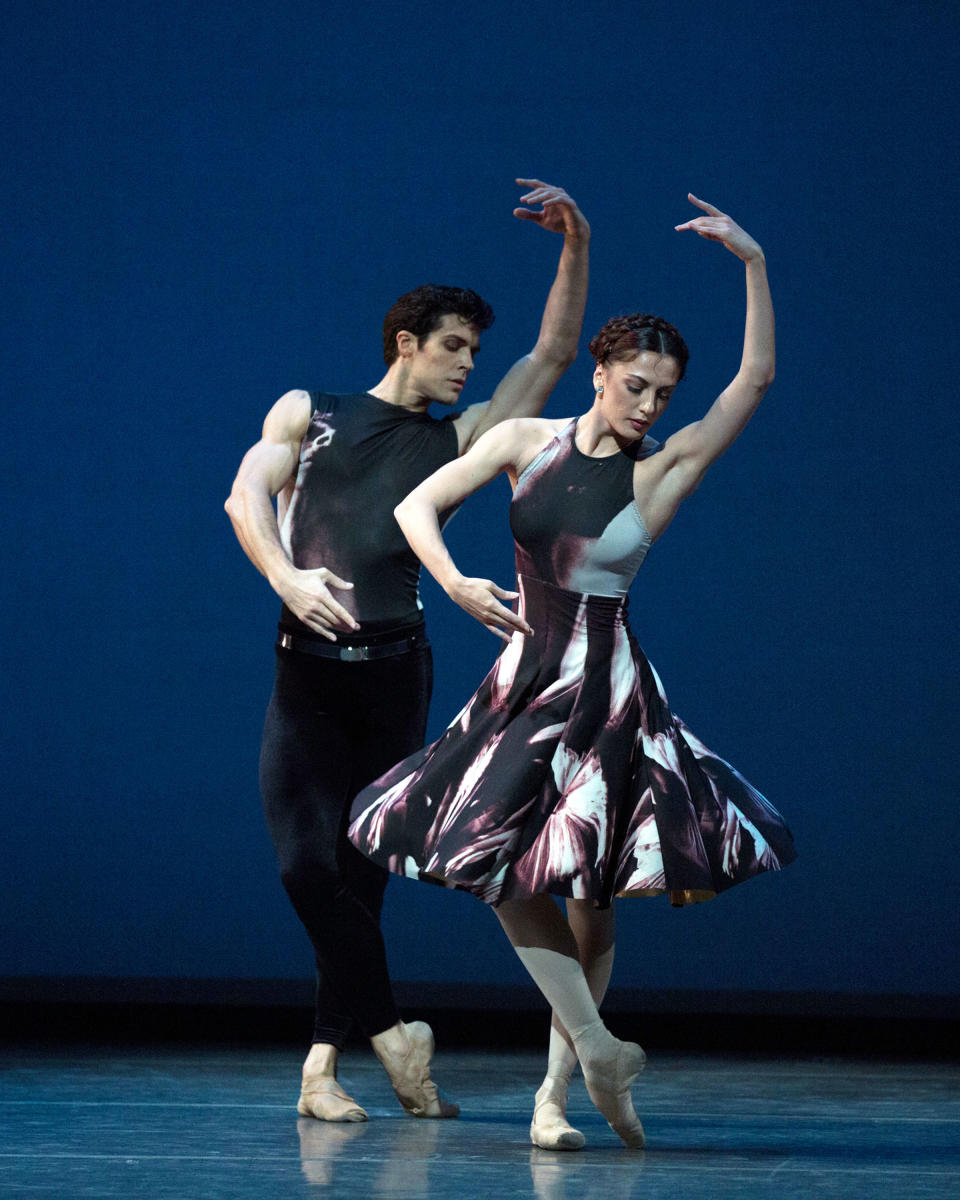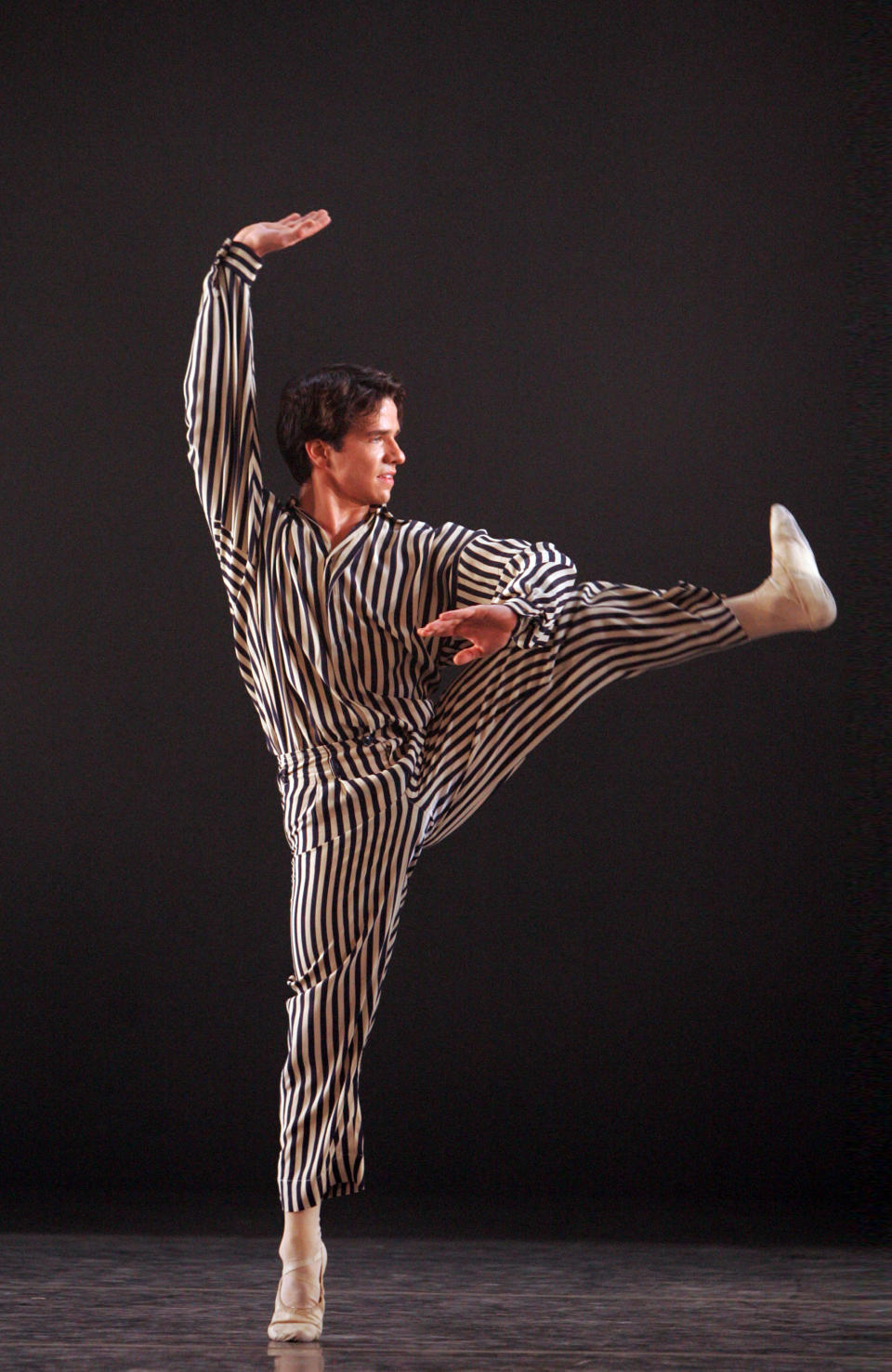ABT fall season: Varied, exciting, and too short
NEW YORK (AP) — What better antidote for a blustery, wet afternoon in midtown Manhattan than to enter a theater for a few hours and see wonderfully attractive dancers perform with absolute bliss on their faces?
That's what one could experience at a recent matinee of American Ballet Theatre's all-too-short fall season, as one watched the younger ABT dancers tear into Twyla Tharp's "In the Upper Room," a 1986 work that never fails to thrill audiences with its propulsive energy, its melding of classical and contemporary styles, and most of all, the joy it brings to both performers and those watching.
Following the ballet over a period of years, one waits to see new faces (and new bodies) tackle its demands, and this year there were standouts as always. For this reviewer, one of them was Luciana Paris as one of the "stompers" (ballerinas in sneakers, not pointe shoes), her every move heightened by the obvious fun she was having, evidenced by an infectious grin.
And then there was the terrific Simone Messmer, who, at Saturday evening's performance, launched into Tharp's fiendishly intricate leaps and twists with gusto and abandon. At the end, the two dancers hugged during curtain calls — like athletes who'd just won an exhausting match but were too invigorated to be tired.
The exciting news of the five-day season at City Center that ended over the weekend was not, however, "Upper Room," which the company has performed many times over the past two decades. It was a world premiere by Alexei Ratmansky, one of the top choreographers working today, to the music of Dmitri Shostakovich's Symphony No. 9.
Actually the work — aptly titled "Symphony No. 9" — is only one-third of a trilogy to Shostakovich, with the second two parts coming this spring, to make a full-length evening at the Metropolitan Opera House. If the first part is any sign, the trilogy is something well worth waiting for.
Ratmansky's last two ballets for ABT, "Firebird" and before that, his "Nutcracker," are story ballets. This is a pure dance work, but with undercurrents of war, danger, victory, fear — the 1945 symphony was commissioned originally to mark the Soviet victory over the Nazis in World War II.
More importantly, it bears the hallmarks of Ratmansky's best work: Intricate, challenging and absorbing choreography, often at breakneck speed; a beautiful synergy with the music; and, most of all, an intimate knowledge of his chosen dancers that enables him to make them shine.
It must be said that all the dancers looked pretty smashing, but particularly the women, in their modern, black-and-white costumes designed by the Dutch designer Keso Dekker.
The cast reviewed here featured the undeniably handsome couple of Roberto Bolle, with his matinee-idol looks, and the striking Veronika Part, a wonderfully theatrical dancer. You could often hear Part gasping or breathing hard as she experienced the fear and sense of danger the work demanded of her.
It begins in fiercely quick fashion, with strenuous and muscular dancing, only to slow a bit for a dramatic pas de deux (on Saturday, for Bolle and Part.) The athletic fireworks come back with a part for one virtuoso male dancer — on Saturday, Jared Matthews, and on the first night the wonderful Herman Cornejo.
Speaking of Cornejo, until the final performance of the week, the high-leaping Argentine was having a terrific season. On opening night, he was the standout in a breezy, sparkling rendition of Mark Morris' "Drink to Me Only With Thine Eyes;" everyone seemed on top of their game, it's just that Cornejo was a tad more so.
He was a clear audience favorite in the Ratmansky piece, only to become injured while dancing it in the Saturday matinee. He was replaced mid-show, and sadly had to miss the evening performance, where he was scheduled to dance in "Upper Room." Hearing the news, the evening crowd moaned collectively in disappointment.
But Craig Salstein stepped in for an ebullient performance that had the crowd on its feet, cheering for the entire company as well as Tharp's enduring appeal. In all, it was a terrific week for ABT, and one can only hope that next fall, one week might turn into two or three.
___
Online: http://www.abt.org


